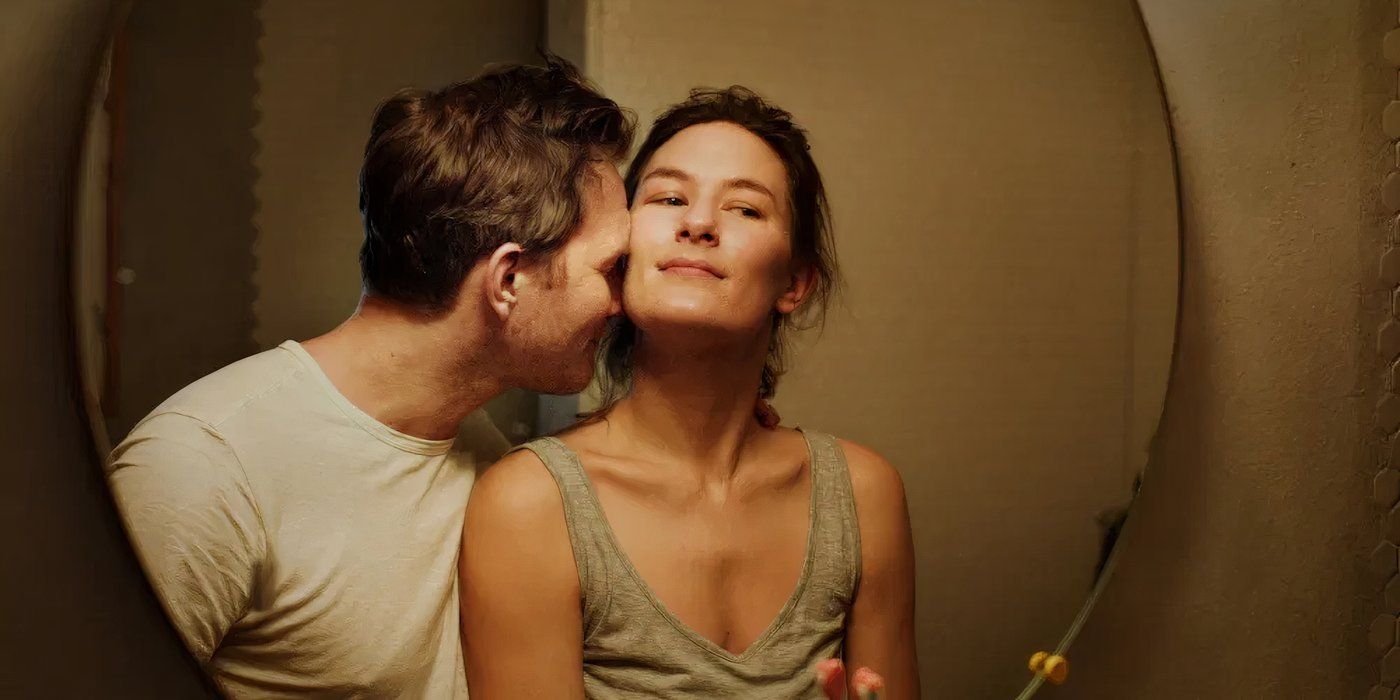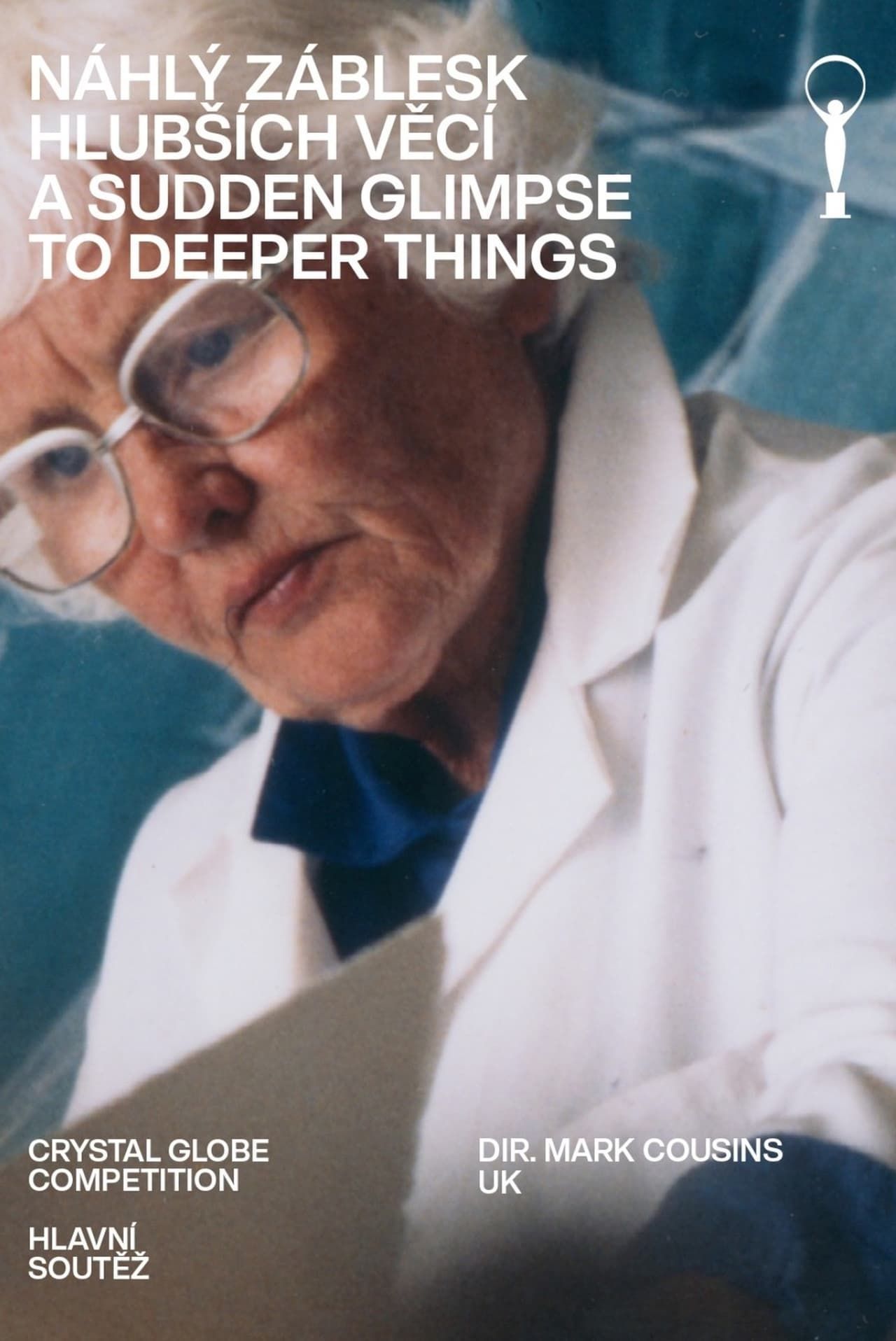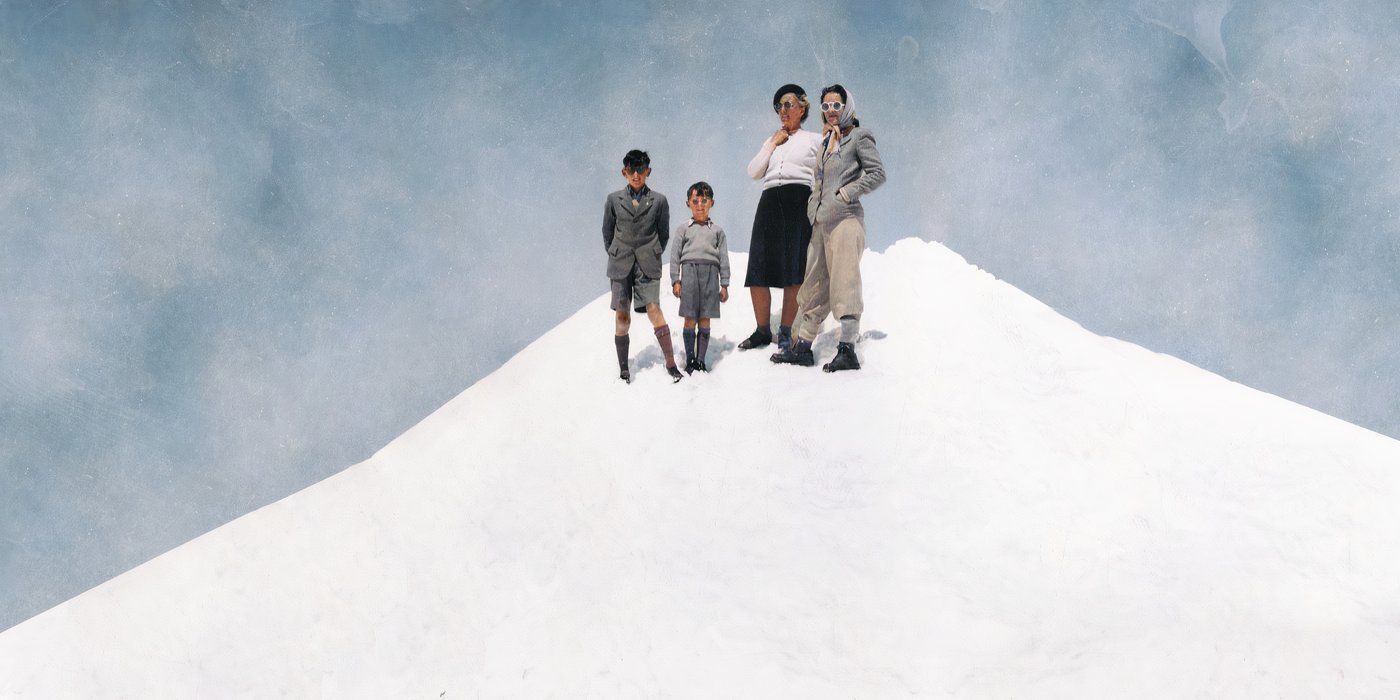The Big Picture
- Mark Cousins’ documentary focuses on Wilhelmina Barns-Graham’s life and art after her glacier trip in 1959.
- The film captivates with its unique approach, but loses focus in the second half, leaving viewers with limited understanding of the artist’s journey.
- Barns-Graham’s work is allowed to speak for itself, but the film often prioritizes style over her as a subject.
In modern documentaries, we are used to filmmakers diving deep into their subject matter to either show a side to them the world hasn’t seen before or to offer a more straightforward account. Mark Cousins’ A Sudden Glimpse to Deeper Things takes a different approach to its subject, the 20th-century artist Wilhelmina Barns-Graham, whose life and career were transformed when she reached the summit of the Grindelwald glacier. Before this event, her synesthesia (for her, every letter had a corresponding color) saw her paintings mostly consist of small squares in an arbitrary form, some touching, some separate. After the 1959 glacier trip, her work reflected her changed worldview, transforming into the style she would become known for. Cousins makes an admirable effort to try and dive into the undercelebrated artist’s mind, but the documentary begins to give way under the weight of his experimental style. Coming away from the film, you definitely have a new appreciation for the artist, but you don’t understand her as much as Cousins may have hoped. The writer and director of the film is determined to execute his own vision — a vision that doesn’t leave much space for its subject.
Mark Cousins Employs a Different Documentary Style
In a world of countless Netflix documentary films and docuseries, a tried and true formula has run rampant across all non-fiction filmmaking. Cousins steps over this not to dissect every facet of Barns-Graham’s life but to tell the audience why they should be familiar with her work. Cousins presented the film at the festival and his affection for his subject was apparent, both in how he spoke of her and the fact he was wearing a t-shirt with her face on it. “She didn’t change the world but she lived fully in it,” he said of Barns-Graham. This acknowledgment of the fact that she may not be as well-known as say, Picasso or Van Gogh, carries over into the film. “This is the story of the brain of a forgotten visionary,” Cousins’ voiceover tells us early on in the film. Cousins has no interest in glorifying Barns-Graham or crafting a recognizable narrative. He sets out to make a film that highlights this woman’s craft that has gone unsung among the public.
The first half of the documentary is a refreshing departure from what we have come to expect from non-fiction films. There are hardly any talking head interviews, the only one being with Lynne Green, a curator who wrote a book on Barns-Graham’s work. The opening presents various images of Barns-Graham in sensible overcoats and comfortable shoes, her eyes hidden by huge, ‘70s reading glasses. Cousins’ voiceover asks us to ponder what we truly see from these pictures. Do we get a sense of what television shows this woman watches or magazines she reads? She is set up as an enigma, and Cousins is perfectly aware that Barns-Graham is someone worth exploring, and she has been unfairly left out of art conversations. “Many told the story of 20th-century art without mentioning her.”

Related
‘Loveable’ Review: One of the Most Poignant and Brilliant Dramas in Recent Cinema I KVIFF 2024
If you thought Marriage Story was the best drama about a relationship coming apart, you’re going to want to watch this one.
It’s a stylistic approach that immediately captivates you, with Cousins’ voice asking repeated questions directly to the audience. He fills you in on his research process, and it feels as though you are discovering information just as he is. However, as the film goes on, this choice ends up being a distraction from Barns-Graham herself. You start to yearn for more focused filmmaking because you feel all the most important and interesting parts of the subject’s life are only being lightly touched upon. We see footage of Cousins poring over her notebooks. Barns-Graham’s synesthesia saw her write out the words to prayers in boxes, with each letter having a corresponding color. It makes for vibrant, deceptively detailed work. She was drawn to “unromantic” things and this comes through in her work, with some paintings deriving from mathematical equations that the artist works out. This is where the film is at its strongest because Cousins allows Barnes-Graham’s work to speak for itself, and offers us an insight into her complex, brilliant mind. If only the film were filled with sequences like these, we might be in a better spot.
‘A Sudden Glimpse to Deeper Things’ Falls Off in Its Second Half
The documentary can be divided into two parts, before the fateful glacier trip and after. While her work definitely becomes more sophisticated after she goes through this transformation, this is also the point where the film really disconnects from its subject. While Cousins sidesteps documentary conventions, he almost goes so far to the other side that it loses the audience’s focus. The voiceovers become more poetic and less informative, and even with the incomparable and soothing voice of Tilda Swinton as the voice of Barns-Graham, it’s hard to invest in the development of a career that hasn’t been fully described. Cousins wants to spread his appreciation for this artist, but the film’s second half doesn’t feel like it fully understands what it’s trying to do. The glacier trip was a turning point in the artist’s career and a pivotal moment in the film, but Cousins doesn’t explore deep enough as to why this had such an impact on her work. It’s presented as a life-changing event, but the how and why are passed over for poetic mediations on the state of life and art.
Outside this, the documentary touches on misogyny and sexism in the art world. Barns-Graham would use her nickname, “Willie,” to hide her gender in the hope of her work attracting more attention. It’s an interesting and important topic that Cousins merely mentions it before moving swiftly on. The documentary aims to track her entire life and career until her death at the age of 91 in 2004, but so much is packed in and rushed that by the end, you feel a large chunk of her story has been omitted. The final 30 minutes is when Cousins’ experimental style is on full display, and only works to remove the audience from the subject. Scenes of hypothetical conversations between Barns-Graham and her younger self with stilted dialogue take up too much time that could’ve been spent further familiarizing us with the artist’s work.
Mark Cousins’s filmmaking style would be better suited to a more famous and well-known person. If he took a public figure whose life has already been documented by countless filmmakers, his unconventional directing methods would shine an alternative light on a story we all think we already know. Unfortunately, this doesn’t work for Wilhelmina Barns-Graham. While Cousins is undoubtedly enthralled by his subject, he forfeits fully introducing her to the audience for stylistic flourishes, and by the end, you don’t feel all that more enlightened. This glimpse is certainly too sudden.

REVIEW
A Sudden Glimpse to Deeper Things (2024)
A Sudden Glimpse to Deeper Things is initially captivating, but the ultimate glimpse it provides proves to be sudden.
- Mark Cousins’ directing style is enthralling and would be perfect for a more recognizable person.
- The documentary’s first half is both insightful and experimental.
- Mark Cousins favors style over fully diving into the mind of Wilhelmina Barns-Graham.
- The documentary’s final 30 minutes detach from the subject matter and start to feel directionless.
A Sudden Glimpse to Deeper Things had its World Premiere at the Karlovy Vary International Film Festival.

